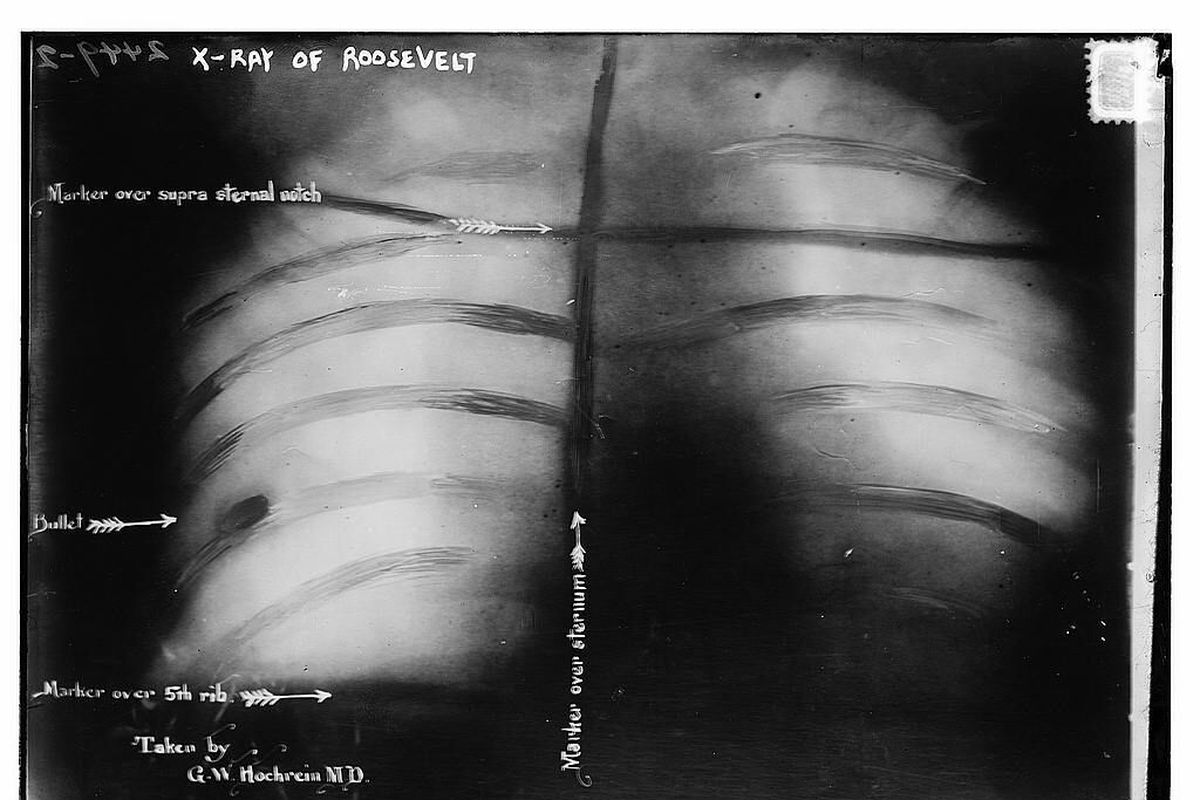Saturday’s Trump incident brings to mind a similar event, in October 1912 involving Teddy Roosevelt

Saturday’s attempted shooting of former President Donald Trump will remind students of presidential history of a similar incident that took place 112 years ago — also involving a former president who was seeking to regain the White House.
Former president Theodore Roosevelt, age 53, had grown dissatisfied with his hand-picked successor and former secretary of war, William H. Taft, who Roosevelt felt wasn’t carrying through with the progressive policies Roosevelt had championed during his own administration. Roosevelt decided to run for president again, against a sitting president of his own party.
Roosevelt, however, was unsuccessful in wrestling the Republican nomination away from Taft. Therefore, he decided to run as a member of the Progressive Party. He liked to call it the “Bull Moose” Party.
John N. Schrank, a New York City bartender who suffered from paranoid schizophrenia, stalked the campaign for weeks across eight states, watching for an opportunity to shoot Roosevelt with a Colt revolver he kept in his pocket.
On Oct. 14, 1912, in Milwaukee — as Roosevelt departed his hotel to speak at a political rally — Schrank saw his chance. He stepped forward through a crowd of well-wishers and fired once from just 5 feet away. Roosevelt’s assistant pounced on Schrank and prevented him from getting off a second shot.
Believing his attacker had missed, Roosevelt bellowed to the crowd to not beat the man. He quietly questioned Schrank, received no reply and then released the attacker to the police.
It wasn’t until Roosevelt arrived at the rally that he realized he was bleeding. A bullet hole was found in his coat. Roosevelt coughed into his hand and said that since he wasn’t coughing up blood, he’d go ahead with his address.
When Roosevelt reached into his coat pocket for his speech, he discovered what had saved his life: The bullet had shattered his eyeglass case and put a hole through his 50 pages of prepared remarks.
Roosevelt took the stage. “I don’t know whether you fully understand that I have just been shot,” he told the crowd. “But it takes more than that to kill a Bull Moose.”
He then showed them the bullet holes in his notes. “The bullet is in me now, so I cannot make a long speech,” he told them. “I will try my best.”
Roosevelt spoke for 90 minutes. Only then did he agree to be taken to a hospital.
Doctors found the bullet lodged against his fourth rib, just short of Roosevelt’s heart. Doctors monitored his condition for several days and eventually decided to leave the bullet in him.
Sure enough, Roosevelt showed up Taft in the election that November, but their rivalry split the Republican vote. Democrat Woodrow Wilson was elected president.
Schrank pleaded guilty to attempted murder but the judge, questioning Schrank’s mental health, threw out his plea. Schrank was found not guilty by reason of insanity and was sent to an asylum.
Roosevelt lived another seven years, dying in 1919 at age 60.
This story by Further Review editor Charles Apple originally appeared in a Further Review page that ran in The Spokesman-Review on Oct. 14, 2022. Sources for the Further Review include “Plotting to Kill the President” by Mel Ayton, “Bully! The Life and Times of Theodore Roosevelt” by Rick Marschall, “The American President” by Kathryn Moore, “The Secret Service: The Hidden History of an Enigmatic Agency” by Philip H. Melanson, the New York Times, the Washington Post, New York Daily News, the Orlando Sentinel, the BBC, History.com and Federation of American Scientists.